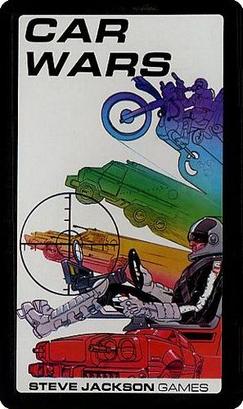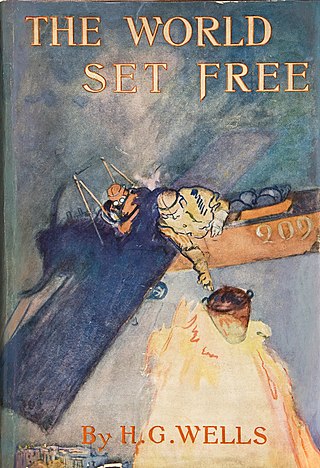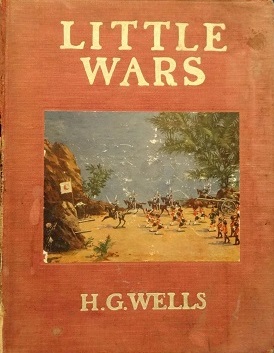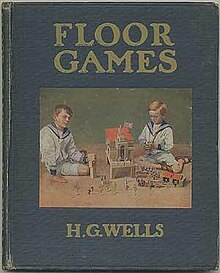
Mancala refers to a family of two-player turn-based strategy board games played with small stones, beans, or seeds and rows of holes or pits in the earth, a board or other playing surface. The objective is usually to capture all or some set of the opponent's pieces.

Scrabble is a word game in which two to four players score points by placing tiles, each bearing a single letter, onto a game board divided into a 15×15 grid of squares. The tiles must form words that, in crossword fashion, read left to right in rows or downward in columns and are included in a standard dictionary or lexicon.

A wargame is a strategy game in which two or more players command opposing armed forces in a realistic simulation of an armed conflict. Wargaming may be played for recreation, to train military officers in the art of strategic thinking, or to study the nature of potential conflicts. Many wargames recreate specific historic battles, and can cover either whole wars, or any campaigns, battles, or lower-level engagements within them. Many simulate land combat, but there are wargames for naval and air combat as well.

A chessboard is a gameboard used to play chess. It consists of 64 squares, 8 rows by 8 columns, on which the chess pieces are placed. It is square in shape and uses two colours of squares, one light and one dark, in a chequered pattern. During play, the board is oriented such that each player's near-right corner square is a light square.

Car Wars is a vehicle combat simulation game developed by Steve Jackson Games. It was first published in 1980. Players control armed vehicles in a post-apocalyptic future.

Miniature wargaming is a form of wargaming in which military units are represented by miniature physical models on a model battlefield. The use of physical models to represent military units is in contrast to other tabletop wargames that use abstract pieces such as counters or blocks, or computer wargames which use virtual models. The primary benefit of using models is aesthetics, though in certain wargames the size and shape of the models can have practical consequences on how the match plays out.

Connect Four is a two-player connection rack game, in which the players choose a color and then take turns dropping colored tokens into a six-row, seven-column vertically suspended grid. The pieces fall straight down, occupying the lowest available space within the column. The objective of the game is to be the first to form a horizontal, vertical, or diagonal line of four of one's own tokens. Connect Four is a solved game. The first player can always win by playing the right moves.

The World Set Free is a novel written in 1913 and published in 1914 by H. G. Wells. The book is based on a prediction of a more destructive and uncontrollable sort of weapon than the world has yet seen. It had appeared first in serialised form with a different ending as A Prophetic Trilogy, consisting of three books: A Trap to Catch the Sun, The Last War in the World and The World Set Free.

The Harvard Classics, originally marketed as Dr. Eliot's Five-Foot Shelf of Books, is a 50-volume series of classic works of world literature, important speeches, and historical documents compiled and edited by Harvard University President Charles W. Eliot. Eliot believed that a careful reading of the series and following the eleven reading plans included in Volume 50 would offer a reader, in the comfort of the home, the benefits of a liberal education, entertainment and counsel of history's greatest creative minds. The initial success of The Harvard Classics was due, in part, to the branding offered by Eliot and Harvard University. Buyers of these sets were apparently attracted to Eliot's claims. The General Index contains upwards of 76,000 subject references.

A toy soldier is a miniature figurine that represents a soldier. The term applies to depictions of uniformed military personnel from all eras, and includes knights, cowboys, American Indians, pirates, samurai, and other subjects that involve combat-related themes. Toy soldiers vary from simple playthings to highly realistic and detailed models. The latter are of more recent development and are sometimes called model figures to distinguish them from traditional toy soldiers. Larger scale toys such as dolls and action figures may come in military uniforms, but they are not generally considered toy soldiers.

In miniature wargaming, players enact simulated battles using scale models called miniature models, which can be anywhere from 2 to 54 mm in height, to represent warriors, vehicles, artillery, buildings, and terrain. These models are colloquially referred to as miniatures or minis.

Walking the plank was a method of execution practiced on special occasion by pirates, mutineers, and other rogue seafarers. For the amusement of the perpetrators and the psychological torture of the victims, captives were bound so they could not swim or tread water and forced to walk off a wooden plank or beam extended over the side of a ship.

Little Wars is a set of rules for playing with toy soldiers, written by English novelist H. G. Wells in 1913. The book, which had a full title of Little Wars: a game for boys from twelve years of age to one hundred and fifty and for that more intelligent sort of girl who likes boys' games and books, provided simple rules for miniature wargaming. Although first printed in 1913, an updated version was released in 2004.

The Shady Dragon Inn is an accessory designed for the Basic Set or Expert Set of the Dungeons & Dragons role-playing game. It was published by TSR, Inc. in 1983. Written by Carl Smith, The Shady Dragon Inn is a supplement used to help dungeon masters introduce fully designed characters into any scenario.

Dave Dorman is a science fiction, horror and fantasy illustrator best known for his Star Wars artwork.
Modules for the game Advanced Squad Leader (ASL) contains all the equipment needed to actually play the game. There are 14 official so-called "core" modules that contain the essential components for a complete order of battle of all major nationalities to participate in the Second World War. Ownership of all core modules is not a prerequisite to playing the game, and as few as one module can be used. In addition to core modules, other products are also available and may be loosely referred to as "modules", or in the more specific terms as Deluxe ASL Modules and Historical ASL Modules. These required previous ownership of some of the core modules in varying combinations, or at least the components of them.
G.I. Joe is an American media franchise and a line of action figures owned and produced by the toy company Hasbro. The initial product offering represented four of the branches of the U.S. armed forces with the Action Soldier, Action Sailor, Action Pilot, Action Marine and later on, the Action Nurse. The name is derived from the usage of "G.I. Joe" for the generic U.S. soldier, itself derived from the more general term "G.I.". The development of G.I. Joe led to the coining of the term "action figure". G.I. Joe's appeal to children has made it an American icon among toys.

A wargame is a strategy game that realistically simulates warfare. Wargames were invented for the purpose of training military officers, but they eventually caught on in civilian circles, played recreationally.

















